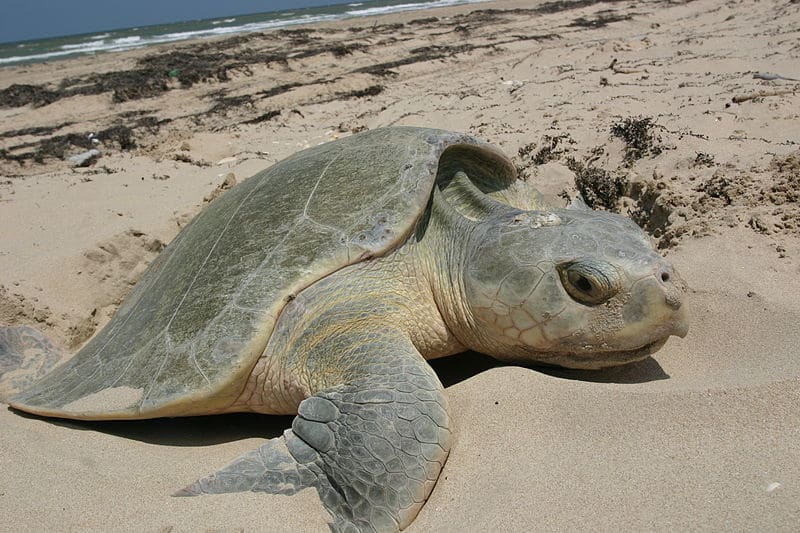Photo of Kemp’s Ridley sea turtles courtesy of the National Park Service – public domain
Rare sea turtles nesting along North Carolina beaches
Experts are asking North Carolina beachgoers to tread lightly after rare Kemp’s ridley sea turtles were spotted laying their eggs on Bald Head Island and Atlantic Beach. Kemp’s ridley sea turtles have never been recorded on Bald Head Island and have been recorded just one other time in Atlantic Beach.
Kemp’s ridley are the rarest sea turtles and are classified as endangered. Should you spot a nesting sea turtle, experts ask that you stay at least 50 feet away. If you take photos or video of the turtle, do not use a flash or light of any kind, as light discourages female turtles from nesting. Beachgoers are also asked not to leave beach furniture or holes in the sand which can impede turtles during their trek through the sand.
Anyone witnessing a turtle laying eggs should call in the location of the nest to the NC Sea Turtle Project at 252-241-7367.
Trump signs executive order lifting environmental review of major projects
Last Thursday, President Trump signed an executive order meant to fast-track major construction projects to boost the economy. The order could mean quick approval of highways, pipelines and oil and gas projects, which have historically been placed in communities of color. The order blocks a number of avenues that communities have used to fight back against unwanted projects, according to The Hill.
“Here we are in the midst of an epidemic that affects your respiratory system and communities that are concerned about respiratory health are losing a voice to stop projects that exacerbate serious health issues,” David Hayes, executive director of the State Energy and Environmental Impact Center at New York University’s School of Law told The Hill.
Russia declares state of emergency over oil spill in Arctic
A fuel tank that collapsed at a power plant in northern Siberia on May 29 leaked more than 20,000 tons of diesel into Russia’s Ambarnaya River, in one of the biggest oil spills in Russia’s modern history. The leak is being compared to the 1989 Exxon Valdez tanker spill in Alaska. The company that owns the power plant, Norilsk Nickel, blamed the spill on thawing permafrost which caused one of the pillars holding the diesel tank to collapse.
The World Wildlife Fund Russia called the spill “catastrophic” and said that it has caused “dead fish, polluted plumage of birds and poisoned animals.” Russia’s minister of national resources and the environment has said it will take at least 10 years for the ecosystem to recover from the spill.








